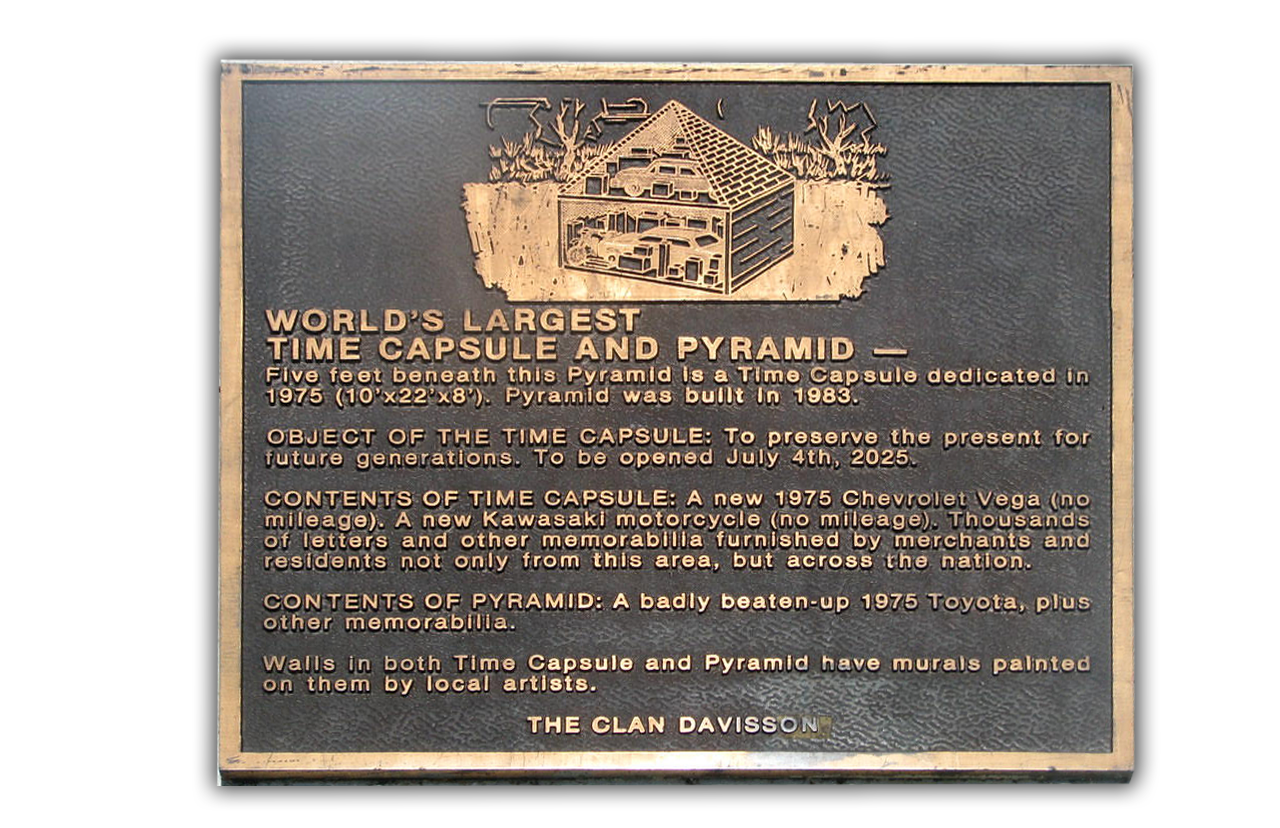The World's Largest Time Capsule Is Preserving Some Shitty Cars
You'd think that if you went through the trouble of sealing a car into a time capsule, you'd pick a really great car. But you'd be wrong.
Calendar enthusiasts are probably already aware that the year 2025 is coming pretty soon, something that can be confirmed by laypeople using a process known as "math." That year is important because it's the year that what is claimed to be the world's largest time capsule will be opened. And inside that time capsule are two cars, both notable for their impressive shittiness.
While most time capsules have been the results of some sort of committees or organizations assembled to carefully select the contents based on some manner of criteria about what future people may find interesting, this largest time capsule, buried in a concrete vault in Seward, Nebraska, was the project of one man, Harold Davisson, and the main goal was to find a way for his grandkids to remember him.
Davisson was a local celebrity and businessperson, and in 1975 built the vault under the lawn of his home furnishings and appliance store. He filled the vault with some pretty idiosyncratic things, including a leisure suit with decorative yellow floral stitching, some panties, a teflon frying pan, a Kawasaki motorcycle, and, what I'm interested most in, a brand-new yellow Chevy Vega.
The Vega seems to have been selected because it was the "cheapest car he could find," which was likely also the reason nearly all Vegas were sold.
There's some video of the capsule being sealed up, from that fateful July 4, 1975 day:
Look at that bright yellow Vega!
There was some controversy over whether Davisson's capsule was indeed the largest one, so, to help put an end to that question, in 1983 a pyramid-shaped capsule was added atop the lower 1975 capsule, and in the pyramid, another car was added.
Instead of a brand-new car, Davisson entombed a beat-up 1975 Toyota (a number of reports suggest it was a Datsun, though the plaque says Toyota) with the justification that he wanted "to show what our society does to a car in ten years," though I kinda think it may have been selected for similar reasons to the Vega—it was really cheap.

For some reason, the capsule is also filled with "piles and piles of telephone books," making the contents of this time capsule feel a little more like a sad, abandoned self-storage unit as opposed to a grand Message to the Future.
Aside from a 1957 Plymouth Belvedere buried in a Tulsa time capsule and unearthed to find it an absolute rusty disaster, the only cars currently known to be preserved in time capsules are the two shitboxes in Nebraska and a Mini that was buried in the Millennium Vault in the UK.
That's it for time capsule cars: a Union Jack-livery Mini that will stay buried until the year 3000, a zero-mileage 1975 Chevy Vega—arguably one of the worst mass-market cars ever sold—and a beat-to-hell '75 Toyota (or maybe Datsun).
I suppose this isn't too terribly shocking—if you have a good car, why would you want to bury it in the ground for decades or longer? But does this mean we're denying future humans from really understanding just how bitchin' our cars could be?
Probably not. Based on the miserable condition of that Belevedere that was unearthed from Tulsa's time capsule, I don't think time capsules are necessarily the best way to preserve cars at all.
In fact, I seriously doubt that Vega will be much more than a massive pile of orange rust-dust encasing four tires when it gets opened in a few years; rust was already one of the Vega's biggest problems, and I just don't see decades of underground storage as the solution to that problem.
As far as the alleged Toyota goes, maybe it'll fare better? Sounds like it's already a heap, though.
Just a few more years and we'll see if I'm right; if so, maybe it'll finally be a lesson that the way to preserve cars is how we already do it for so many—in automotive museums, where they're cared for and maintained and even driven, and can be enjoyed by everyone, not just some weirdos who haven't even bothered to be born yet.
(thanks, Hans!)
